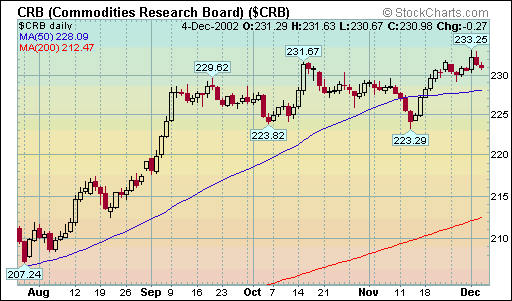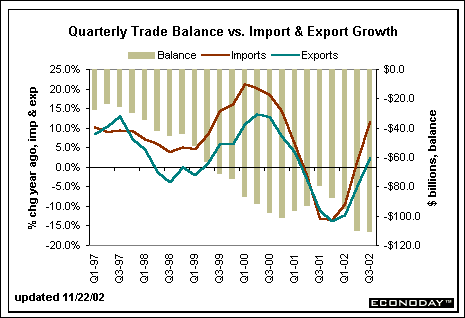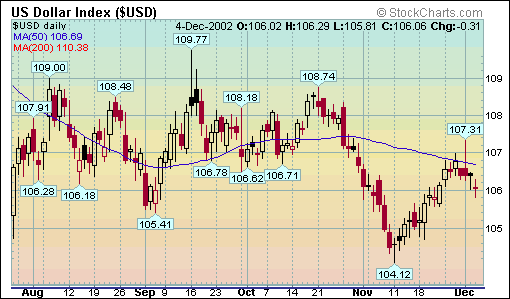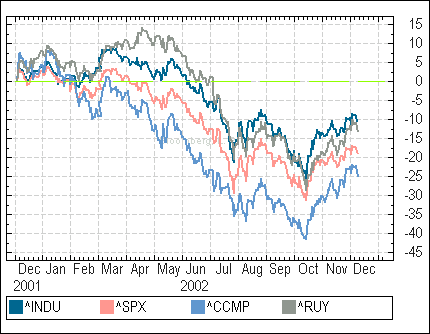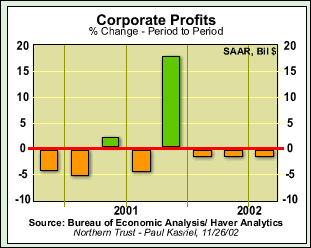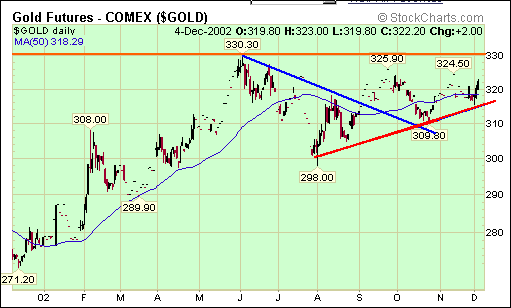The Elections are behind us and the Republicans are now to blame! |
|
|
With the elections providing President Bush control of both houses of Congress as well as the passage of the Homeland Security bill, the Republican Party now must face the fact that they are now solidly in the majority. |
|
In 1994, the Contract with America energized the Republicans |
|
With Congress now in the hands of the Republicans, President Bush and his party should clearly set forth their agenda to the American public. Their vision for the future of this country is important and needs to be communicated to the voters. Will GWB continue to waffle between the Conservatives and Moderates and hope that things will get done? Or will he clearly state his intentions and the Republican agenda to Congress and require the Congressional leadership to forget trying to work with the Democratic opposition ? During the last session after Senator Jeffords jumped ship, the Democrats used every tactic to forestall the President's judicial and administration nominee's. After that example of working together, it should be clear that committee chairmanships should be controlled by the majority party. Seniority as a basis for committee assignments and chairmanships is a concept which should be abandoned in the next Congress. The practice of kowtowing to Senators about judicial appointments in their state is another practice to be discarded. The budgeting process needs to be completely revamped in order to allow dynamic budgeting forecasting. Every single item in the budget needs to be placed under a sunset review. With the national debt going to exceed $6.45 Trillion by February, one of the first acts of this Congress will be to raise the debt limit. However, at the same time, each department of government should be required to reduce its budget 5% per year until the federal debt is under control.
|
|
Are you ready for a repeat of the German hyper-inflation madness? |
|
| The Federal Reserve has increased the money supply at a
rate in excess of 22% annually during the past six weeks. Dr. Ben Bernanke, prior to his recent appointment as a Federal Reserve Governor, was the Chairman of the Department of Economics at Princeton. He was the Director of the Monetary Economics Program of the NBER (National Bureau of Economic Research) and the editor of the American Economic Review. He co-authored a widely used textbook on macroeconomics. He is obviously well-respected in economic circles, and will be one of the more influential governors. In his first major speech as a Fed governor before the Economist Club in Washington, which is not a small venue, Bernanke said:
The Fed has stated that they have a printing press and will print as much currency as it takes to re-inflate the economy. But according to the government, there is no inflation.
Of course, the CRB index says otherwise. |
|
The Trade Deficit continues to increase . . . |
|
|
October's trade deficit was down slightly over September's record level. However, it still makes 2002 look like an all-time record year shaping up. As foreign capital continues to leave the country, the Fed will have to run those printing presses faster.
|
|
The Dollar is vulnerable! |
|
|
Welcome to the end-game for fiat currency . . . which is what the U.S. dollar is. For the past few months, the dollar has been trapped in a range of from $104 to $109. Recent action would tend to suggest that as capital flows out of the U.S. and the trade balance refuses to improve, the $104 level could be penetrated and the dollar could fall to the low 90 range in a quick move.
The dollar's salvation is that many consider it the best of the lousy currencies and it still is dominant in world trade. Yet, foreign capital continues to move offshore to find better yields and despite the recent rally in the U.S. markets, foreign equity markets have continued to outperform the domestic markets. As the dollar decreases in value because of the growth of the money supply and the withdrawal of capital to overseas markets, some analysts point out that a lower dollar will increase the competitiveness of our manufacturing sector. There is only one problem with that reasoning. The U.S. base manufacturing sector has largely been shipped, equipment and technology, overseas. Perhaps, Magic Al will waive his wand and conjure up the manufacturing industries other than high-technology, airplanes, and agricultural products where we could begin to compete even with a 20% drop in the value of the dollar. It isn't going to happen in the near future.
|
|
Has the rally run its course? |
|
|
Market historians have pointed out the seasonality of the market having an important effect upon performance. The October to February period is often cited as the time to be in the market. This year so far, the market trend would appear to be working. However, with the number of companies beginning to lower sales and revenue projections as well as the weakness shown in retail sales, the current rally may be about to fizzle.
The above chart shows the change in each of the major averages since January 1st and it appears to me that the markets are about ready to head lower. |
|
Low interest rates are not the answer! |
|
The Fed's panic move in lowering interest rates 50 basis points will not help an economy where demand is lacking. With capacity utilization hovering around 75%, the need to increase business capital investment is not there. The Fed is following the Japanese script and the result will be the same unless the printing presses run faster and the value of the U.S. dollar drops to the point where our economy can again produce goods (not services) competitively with third world wages. Of course, that is also a terrible scenario. Finally, the Europeans are reducing their central bank rates. While that can help somewhat to reduce the interest rate spread between the U.S. and Europe, hot money will continue to move to Europe to get the higher yields as well as to not face the risk of a potential 20-35% decline in the value of the U.S. dollar. The costs of the War on Iraq will be large and further balloon the federal deficit and as a result, many corporations will be squeezed out of the market. As the U.S. Treasury increases its borrowing (assuming that the debt limit increase is passed), the increase in credit requirements for loans and the reduced availability of funds will cause interest rates in the corporate market to continue to increase. |
|
Corporate profits must increase before the market improves! |
|
| The economy has been pulled along during the past year by
the consumer who has either refinanced his home, or taken advantage of low
interest rates to purchase either a new home or an automobile. However, the automobile market in November dropped about 20% and the incentive programs have prevented the companies from making a profit. Until corporate profits increase, the stock market is vulnerable and the long-term picture does not look good. Corporate profits have been down for three consecutive quarters. The following chart shows the trend in corporate profits recently.
Market valuations reflect investor's expectations about future profits. Since 1999, those expectations were that the turn-around in corporate profits were just around the corner. Actually, corporate profits peaked in 1997 and have been headed down every since and this year should be about 7% lower than in 2001. At some point, corporate profits will improve but until they actually do, be cautious. Until then, any market rally must be considered a bear market rally. |
|
Is Gold ready to make its move? |
|
| During the past year, investors in either the gold
equities or the bullion markets have had considerable success. In late
May, the price of Gold failed to pierce the $330 barrier as the U.S.
Treasury in conjunction with the bullion banks sold heavily. Since June, gold has traded in a relatively narrow band as shown in the following chart. However, gold continues to make higher lows and has pierced successfully the wedge shape formation in early September.
From a technical point of view, the Gold chart looks like it might be ready to assault the $330 barrier again. Since mid-September, two attempts at moving the price of gold higher have been thwarted by the Gold cartel players. The derivative position of the gold bullion banks like JPM, C, BAC, and GS could be in serious jeopardy if the $330 level is breached. Will this latest attempt be the successful one? |
|
The possibility of military action in the Middle East is increasing. |
|
| Despite the failure of the U.N. inspectors in Iraq to find any weapons of mass destruction so far, the December 8th deadline for a complete inventory of those items is just a few days away. However, it has been reported that the U.N. inspectors have given advance notice of sites to be inspected to the Iraqi's and that the U.S. has not provided all of its intelligence information to the U.N. inspectors for fear of leaks. The deployment of the Truman carrier battle group from Norfolk in early December and the possible call-up of military reservists suggests that action is getting very close.
Based upon the sizeable momentum which the military has initiated, one must conclude that military action is imminent. The estimated cost of a war with Iraq is expected to add $200 billion or more to the Federal deficit. |
|
How will the military conflict affect the market? |
|
|
The honest answer is . . . no one really knows! It will depend upon a variety of factors including:
To me, each and every one of these factors could affect the stock market negatively. Arrayed against these negative points is just one positive one. That is what happens if Saddam Hussein is either assassinated or resigns from office. As one can tell, in this situation, the negative impacts far out-number the positive ones. As a result, my inclination is that the market environment is not positive. |
|
The die is cast . . . |
|
| The Bush administration failed to take strong actions upon
winning the 2000 election and hence, it will be blamed for the mistakes
caused by the Federal Reserve and the Clinton administration. Bush should have demanded the resignation of Magic Al upon taking office and had the U.S. gold supply audited as well as the IMF. The positions which have been taken by these hold-over politicians has now effectively put this nation into both the Japan trap as well as the inflation scenario of Germany's Reich mark in the 1920's. Both scenarios don't have good outcomes. The only solution for the individual investor is to get out of debt, hold things rather than paper assets, and keep a low profile. |
|
Conclusion |
|
We are approaching the dollar and gold flashpoints in the financial markets. The only question is when the derivative fuse will take JPM under. If United Airlines files bankruptcy, JPM will have another few hundred million to write-off as will GE. I will continue to be on the short side of the financial stocks in the near future. With retail sales weak, the consumer debt load is staggering, and with layoffs still being announced daily, I doubt if the worst is behind us. Today, I received an unsolicited phone call from an automobile dealer about replacing my 3 year old automobile. $3,000 rebate, $500 owner loyalty rebate, $6,000 dealer discount and 0% interest on the balance for 36 months. With deals like this, the automobile manufacturers and their dealers are in trouble. Perhaps, we all are. |
|
But then - 'Tis Only My Opinion! |
|
| Fred Richards December 2002 Corruptisima republica plurimae leges. [The more corrupt a republic, the more laws.] -- Tacitus, Annals III 27
This issue of 'Tis Only My Opinion was
copyrighted by Adrich Corporation in 2002.
Last updated - July 6, 2008
|
|
